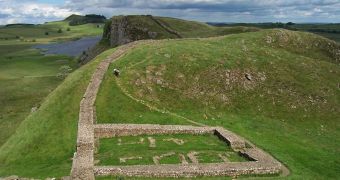Studies suggests that some of the oldest discoveries made, and some of the most interesting conclusions derived from analyzing archaeological sites may need to be revisited, as they could be misleading.
Researchers say that this may be particularly true for studies of the Stone Age and its cultures. There are some things that science never properly accounted for, and those things include goat and water buffaloes.
The procedures associated with studying artifacts and ancient tool need to be revised, so that the potential impact left behind by passing herds of wild animals is also accounted for.
Trampling the artifacts into the mud may have had a significant influence on the way they look at this point, experts say, and taking this into account may change the story these objects say completely.
Scientists with a new study discovered disturbingly large amount of disturbances in artifacts located in water-saturated area, Science Blog reports.
These locations are very important because this is where the largest concentrations of humans have gathered since the dawn of our species.
“Given that during the Lower and most of the Middle Pleistocene, hominids stayed close to water sources, we cannot help but wonder how prevalent saturated substrate trampling might be, and how it has affected the context, and resulting interpretation, of Paleolithic sites throughout the Old World,” the authors of the new paper say.
Their work is detailed in a paper entitled “Experimental Examination of Animal Trampling Effects on Artifact Movement in Dry and Water Saturated Substrates: A Test Case from South India.”
The document, which was published in the latest online issue of the esteemed Journal of Archaeological Science, hints at the fact that some past investigations need to be revisited.
One of the main dangers associated with artifacts and animal trampling is the fact that goat heards and water buffaloes can push an artifact up to 21 centimeters into the ground.
This is the equivalent of thousand of years for scientists looking to date the discovered artifact based on its location, says Southern Methodist University archaeology graduate student Metin I. Eren.
“Believe it or not, there have been dozens of trampling experiments in archeology to see how artifacts may be affected by animals walking over them,” he adds.
“These have involved human trampling and the trampling of all sorts of animals, including elephants, in dry sediments. Our trampling experiments in dry sediments, for the most part, mimicked the results of previous experiments,” Eren says.
However, the group of eight researchers discovered that the situation changed in water-rich soils, such as those around rivers. This is what prompted their concerns.

 14 DAY TRIAL //
14 DAY TRIAL //